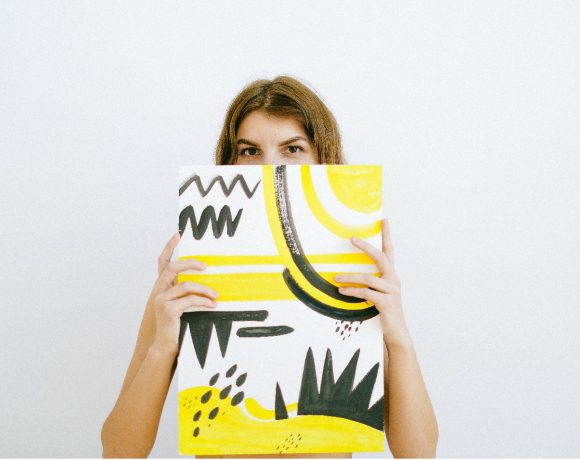Keeping artwork organized is a crucial task for artists, collectors, and art enthusiasts alike. Whether you have a small personal collection or run a large gallery, maintaining a well-organized and accessible inventory can save you time, effort, and headaches in the long run. Let’s go over some of the best practices for organizing and cataloging artwork, providing you with a comprehensive guide to streamline your art collection management.
Identifying Your Needs
The foremost aspect of organizing your artwork is to understand your specific needs. This should be determined by the nature and size of your collection, the frequency of acquiring new pieces, how often you interact with your collection, and your long-term goals for the artwork. If you own a small collection that you display in your home, you might want to organize it differently than if you are a gallery owner or a serious collector with a rotating display.
Choosing a Logical System
After identifying your needs, select a logical system that suits them. A few ways you could categorize your artwork include:
- By Medium: This is especially practical if you have a diverse collection featuring different mediums like oil paintings, watercolors, photographs, sculptures, etc. Separating by medium allows for easier access and can help ensure that each piece is stored under appropriate conditions for its specific needs.
- By Artist: If your collection features work from various artists, it might make sense to organize them by the artist’s name. This is particularly useful for art dealers or collectors who focus on works from certain artists.
- By Genre or Style: Grouping pieces by their genre or style (abstract, surrealism, impressionism, etc.) allows you to quickly navigate to pieces that share a similar aesthetic or theme. This can be useful when trying to curate a display that tells a certain story or creates a specific mood.
- By Date or Period: If your collection spans different periods or if you have artwork from the same artist that spans different stages of their career, you might want to consider organizing by date or period. This can also help in understanding the evolution of an artist or art form.

Photo by Antoni Shkraba for Pexels
Consistency and Intuitiveness
No matter which method of categorization you choose, ensure the system is consistent. This means that every piece of art has a predetermined category where it belongs. An intuitive system will make it much easier to locate a particular piece of artwork in the future. In addition to that, consistency in labeling, whether physical labels or digital entries, is crucial to avoid confusion.
Documentation
Document each artwork in your collection. This should include all relevant information about each piece – its name, the artist’s name, the medium, the date it was created, its size, its acquisition details, etc. Also, photographs of each piece will help in tracking and identification. This could be stored in a physical file or digitally. There are even specific art management software options available for this purpose.

Photo by Anete Lusina for Pexels
Physical Arrangement
If your collection is physically extensive, consider how the artwork is stored or displayed. It should reflect your categorization system. For instance, you might have separate rooms or sections dedicated to different mediums or artists. Make sure the environment is suitable for the type of art stored there – consider light exposure, temperature, and humidity.
Regular Updates and Review
As you acquire or let go of pieces, it’s crucial to keep your system updated. Regularly review and possibly revise the system as your collection changes or grows. Ensure that new acquisitions are incorporated into the system promptly and correctly.
Create Detailed Records
Cataloging artwork requires creating detailed records for each piece. Include essential information such as the artist’s name, title, year of creation, medium, dimensions, provenance, and any other relevant details. Additionally, consider adding high-resolution images of each artwork to the catalog to facilitate identification and reference.
Utilize Technology
Leveraging technology can significantly enhance your art collection management process. Numerous software options and online platforms are available specifically designed for cataloging artwork. These tools offer features such as database management, image uploading, tagging, and search capabilities, making it easier to efficiently organize and locate specific artworks.
Moreover, some of these platforms allow for augmented reality viewing, allowing you to envision how an artwork will look in a particular space before purchase or installation. Advanced features like artwork condition reporting, provenance tracking, and valuation data further enrich the utility of these tools. The integration of technology into artwork organization and cataloging reduces manual effort, increases accuracy, and provides a more comprehensive understanding of your art collection.
Implement a Barcode System
A barcode system can streamline the process of tracking and managing your artwork. Assign unique barcodes to each piece and create corresponding labels or tags to attach physically. By scanning these barcodes, you can instantly access information about the artwork, update its location, or view its history within your cataloging system.
Prioritize Conservation and Documentation
Conservation and documentation are integral aspects of organizing and cataloging artwork. Implement proper preservation techniques to safeguard your collection against damage or deterioration. Document any changes, repairs, or restorations that artworks undergo over time. This information will prove invaluable for future reference and provenance verification.
Regularly Update and Review
To ensure the accuracy and relevance of your catalog, it is essential to establish a routine for updating and reviewing your records. Make it a habit to document new acquisitions promptly, update information as needed, and remove artworks that are no longer part of your collection. Regular reviews will help maintain the integrity and efficiency of your cataloging system.

Photo by Designecologist for Pexels
Back-Up Your Data
Lastly, always back up your cataloging data to prevent loss or damage. Store your records in multiple locations, including physical backups and secure digital storage solutions. This precaution will provide peace of mind and safeguard your hard work from potential data loss incidents.
Conclusion on the Best Practices for Organizing and Cataloging Artwork
Organizing and cataloging artwork can be time-consuming, but it is an investment that pays off in the long run. By following these best practices, you can streamline your art collection management, enhance accessibility, and ensure the longevity of your valuable assets. Embrace technology, maintain detailed records, and prioritize conservation to create a cataloging system that empowers you to enjoy and share your art collection fully. Start implementing these practices today and watch your organization skills flourish.
____________________________
Author Bio:
Marie Lawson is a seasoned art enthusiast, tech aficionado, and acclaimed blogger on the intersection of art and technology. Working at Golans Moving and Storage inspired many practical storage ideas for art collections. She believes that integrating technology into the art world preserves our artistic heritage and paves the way for unprecedented creativity.









NO COMMENT